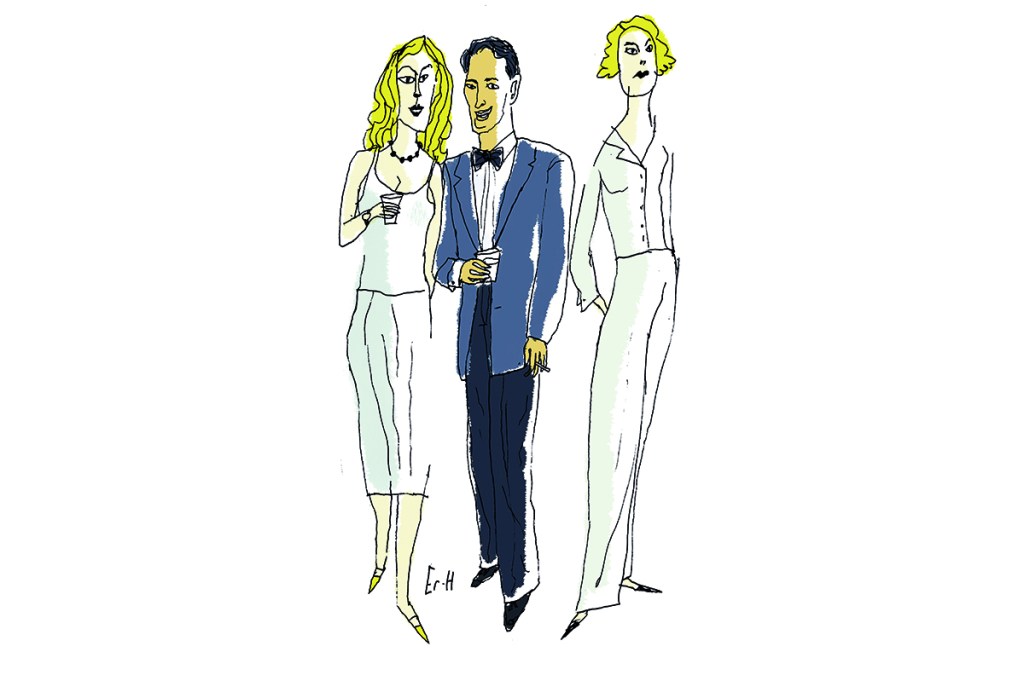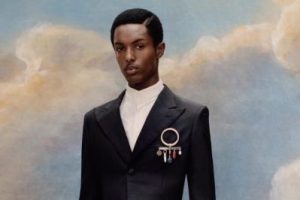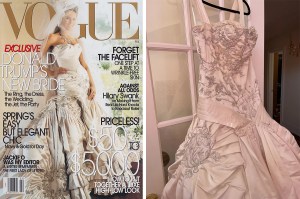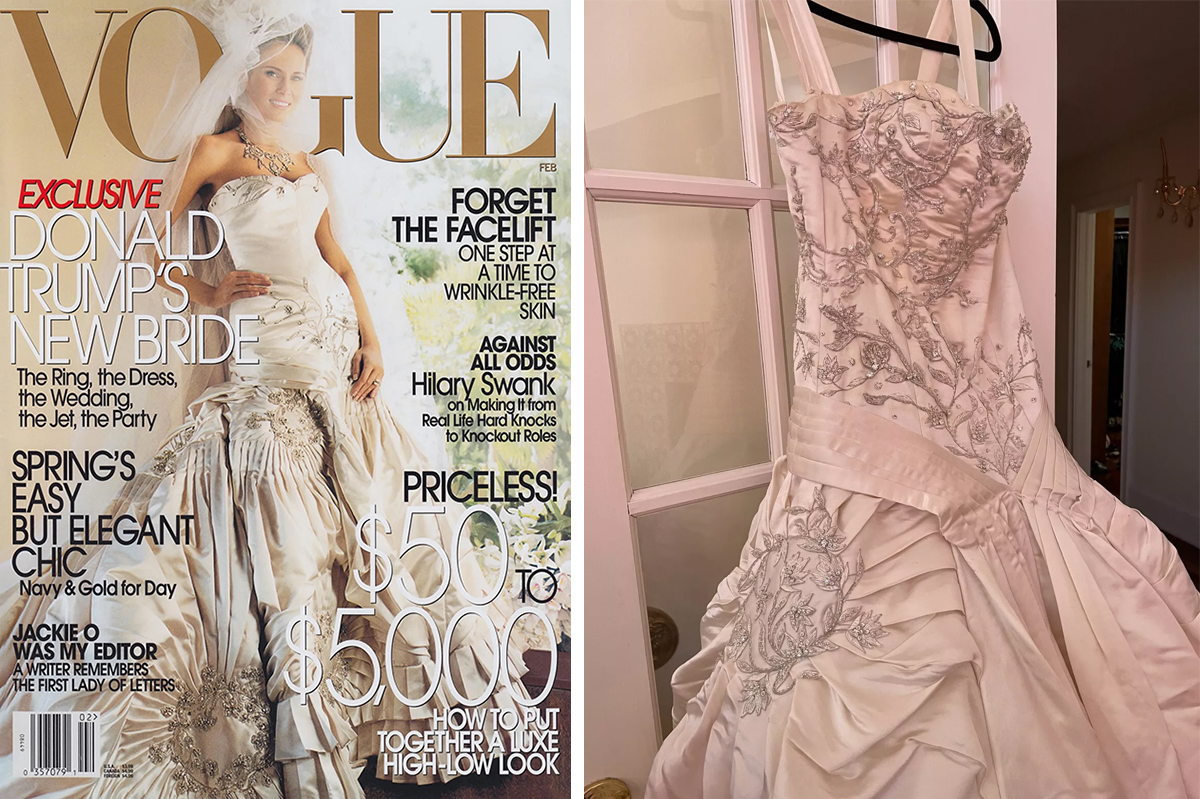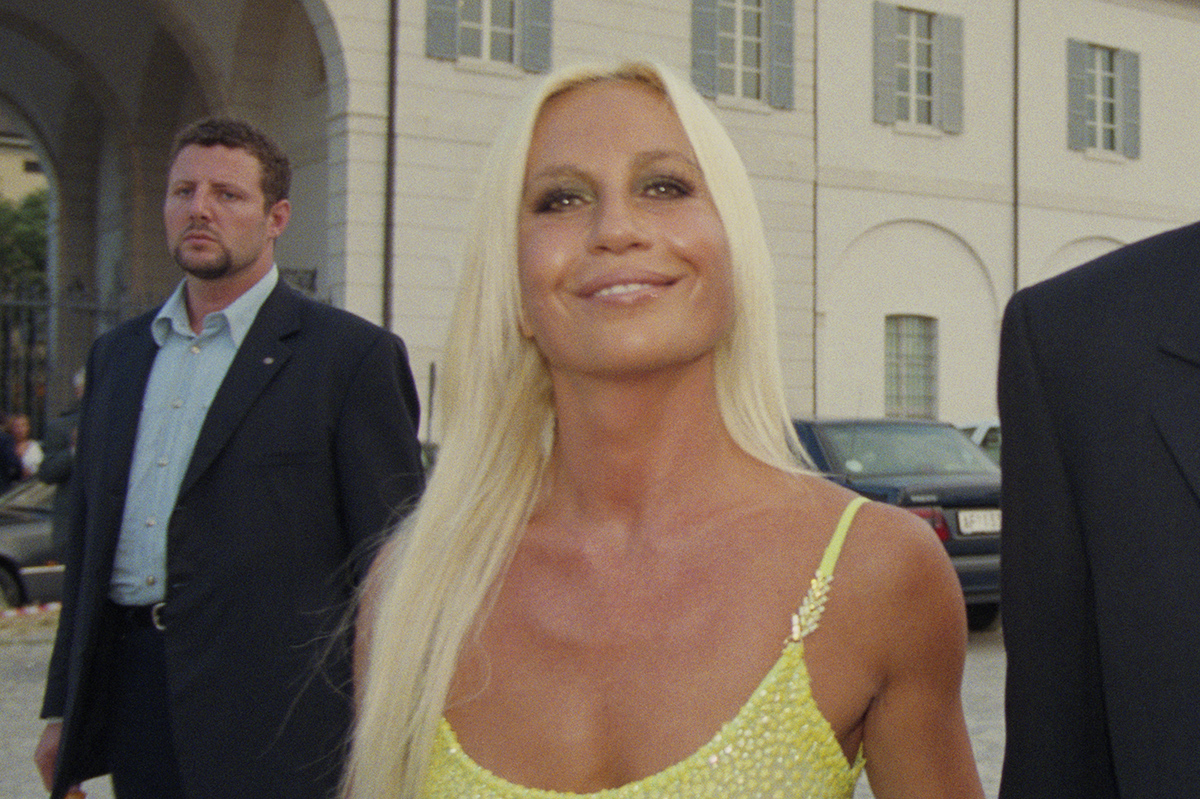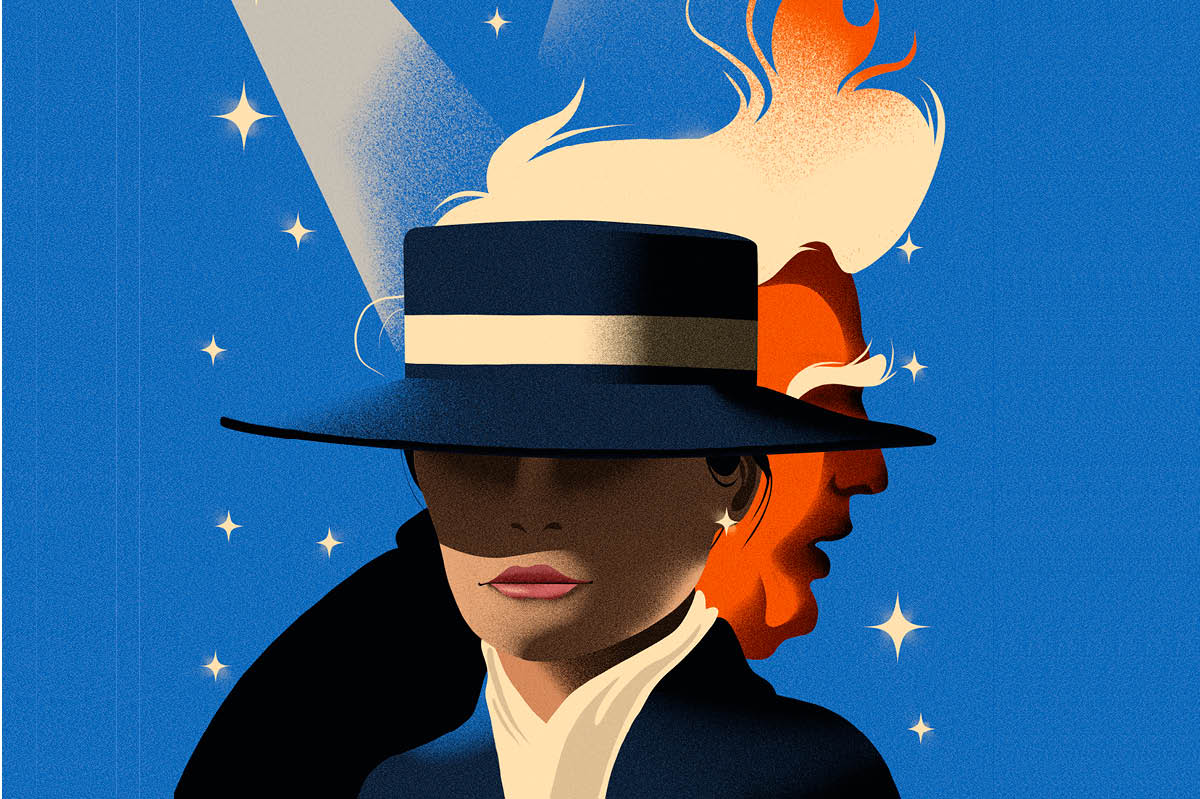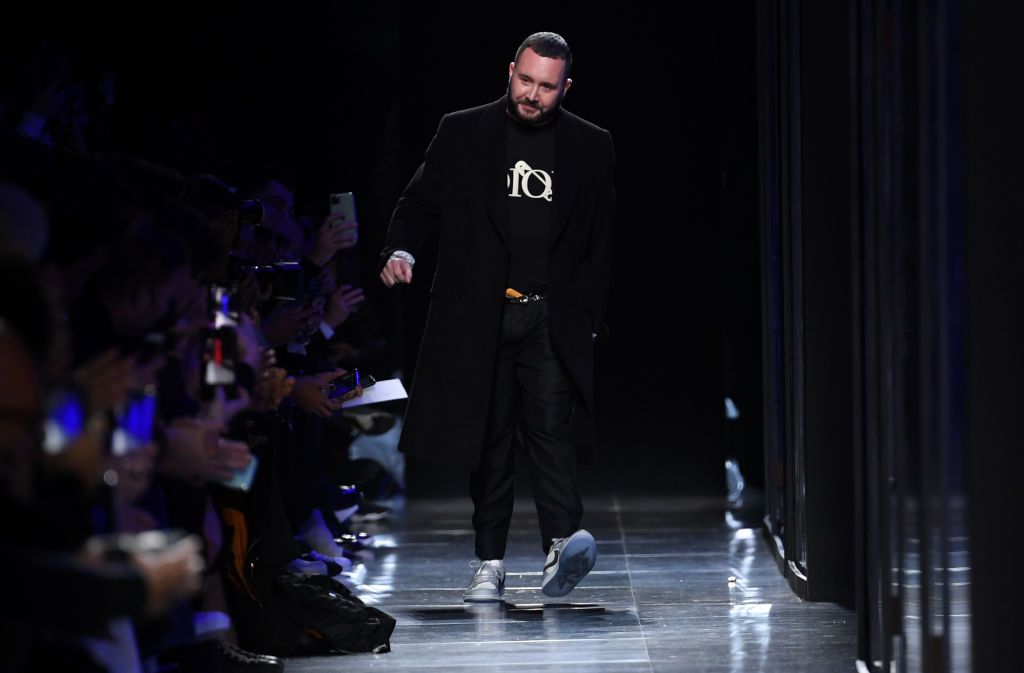‘Imperious’ comes to mind in describing the great American fashion designer Halston. ‘Perverse’ does too; ‘grand’, ‘haughty’, ‘intimidating’ also fit. But, once you got to know him, it was apparent that he was a sweet and clever boy from the corn fields of the Midwest putting on a show for the big city sophisticates he sought to impress — and impress them he did.
I met Halston in the summer of 1971 when I was brought to a party at the fashion illustrator Joe Eula’s by Andy Warhol, who had made me editor of his new magazine Interview the previous fall at age 22. Halston terrified me. Tall, thin, hair slicked back, skin as smooth as ivory, he was dressed entirely in black from his turtleneck to his boots — with the exception of a long, bright-red silk scarf which twirled around his shoulders and down his torso like a very pretty snake — and lounging nonchalantly on a chaise in a far corner of the living room, blowing smoke rings to the ceiling.
‘That’s Halston,’ Andy informed me in a hushed tone. ‘He’s really up there, Bob.’ Though both men were in their early forties, Halston had ascended into the social stratosphere long before Andy, when he had designed hats for Bergdorf Goodman, the ne plus ultra of Fifth Avenue department stores, in the 1950s and become the favorite of ladies like Babe Paley, Gloria Guinness and Bunny Mellon. In 1961, he created that famous pillbox Jackie Kennedy wore to JFK’s inauguration; in 1968, he established his own couture house on Madison Avenue at East 68th Street; by 1971, he was on top of New York’s fashion pack, the American equivalent of Yves Saint-Laurent.
Feeling short, un-color-coordinated, and uncool, I was rescued by Pat Ast, the full-figured, frizzy-haired Jewish girl from Brooklyn who was Halston’s star salesgirl and who also had a part in Andy’s latest film, Heat. ‘Hi, honey,’ she drawled. ‘I lovvved the new issue of Interview. C’mon, I’ll introduce you to Halston.’
I had no idea what to say to him, and conversation was almost impossible anyway, as all these tall, thin girls in fabulous looks kept coming and going, cooing and kissing, cracking jokes and whispering gossip, falling to the floor in front of his chaise, jumping up to greet one another with unintelligible bursts of English, French and Italian all mixed up. Halston said the same thing to all of them: ‘How are ya, darling?’ Pat Ast introduced me to this dazzling chorus line of international beauties: Marisa Berenson, Berry Berenson, Loulou de la Falaise, Elsa Peretti, Marina Schiano, Anjelica Huston. And then Liza Minnelli dashed in with Desi Arnaz Jr. She screeched ‘H!’ at Halston, and ‘Andy!’ at Andy, and ‘Eula!’ at the host, and dashed out with Desi Jr. (Perhaps because the Australian singer Peter Allen, whom she was in the process of divorcing, was also at the party.) ‘H.’ by the way, was what Halston’s innermost circle called him.
In May 1972, Interview, which had started out as a ‘film journal’, ran its first fashion spread: a Q&A with Halston by Pat Ast, illustrated with Joe Eula’s sketches of the designer and his models. Everyone loved it. Then Joe Eula asked to have his original drawings delivered to Halston, who was planning on having them framed. The only problem was that my fellow editor, Glenn O’Brien, had misplaced the drawings. We finally found them under a pile of rejected layouts, crumpled and a bit torn. It was left to me to take them up to Halston. I tried to leave them with the receptionist at the Madison Avenue boutique, but Halston instructed her to show me right up to his second-floor studio. He greeted me with effusive praise for our feature on him. ‘I’ve been giving them out to all the ladies when they come in for their fittings — Lily, Mica, Chessy, like that.’ (Mrs Douglas Auchincloss, Mrs Ahmet Ertegun, Mrs William Rayner, respectively.) ‘Everyone adores the story, darling. And what really makes it work are Joe’s fabulous drawings, don’t you agree?’
I passed the Interview envelope holding the fabulous drawings across his black lacquer desk. He was, as always, dressed in all black and surrounded by white orchids. He slid the drawings out of the envelope.
‘Is this your idea of a joke?!?’ he screamed. ‘These drawings are ruined! How dare you treat the work of a great artist with such careless disdain! Get out! And be sure to tell your Andy Warhol that he’s not the only important artist in town! Get out! Get out!’
Of course, over the next few years Halston and Andy would become bosom buddies, and I came to see his softer, down-to-earth, more endearing side. As his business boomed, he also became an important collector of Andy’s artworks and a major advertiser in Interview. In 1973 he sold his company and name to Norton Simon, a conglomerate that owned Avis Rental Cars and Max Factor Cosmetics, and used his windfall to buy a townhouse on East 63rd Street designed by the modernist architect Paul Rudolph.
When Studio 54 opened in 1977, Halston began giving frequent dinners in the house’s three-story living room — menu: caviar, Stolichnaya, cocaine; décor: gray Ultrasuede, white orchids — for the In crowd — Liza, Bianca Jagger, Andy, 54’s owner Steve Rubell — before leading everyone to the fabled disco in a convoy of stretch limos. I’ll never forget the picture of Victor Hugo, Halston’s Venezuelan window dresser and rent boy-turned-boyfriend, clad only in a jockstrap, asking First Lady Betty Ford and the octogenarian modern dance legend Martha Graham what they’d like to drink. They went with the vodka.
That same year, Braniff Airlines had Halston design the interiors of its new 747s and the uniforms of its stewardess — everything beige Ultrasuede, the synthetic fabric that had become his trademark. To celebrate the occasion Braniff flew three plane-loads of celebrities and socialites from Paris, New York and Los Angeles to Acapulco for a weekend of festivities. It was like a jet-set convention, with everyone from the Alfred Bloomingdales, Oscar Wyatts and Guilford Dudleys to Baby Jane Holzer, Princess Ghislaine de Polignac, São Schlumberger and Jerry Zipkin put up in casitas at Las Brisas, and Lady Bird Johnson and Henry Kissinger esconced in the seaside villa of Merle Oberon and Bruno Pagliai, the multimillionaire Mexican industrialist.
I shared a casita with Halston’s in-house muse and stylist, D.D. Ryan, who had worked under Diana Vreeland at Harper’s Bazaar in the 1950s and married the banking heir John Barry Ryan III. D.D. spent an hour each morning stretching and meditating, followed by an hour on her neo-kabuki makeup and jet-black chignon, which she held together with a set of lacquered Japanese chopsticks. Halston and his models, dubbed the Halstonettes, arrived an hour late at every lunch and dinner, marching down the gangplank of his chartered yacht all wearing the same color Halstons, white bathing suits and caftans one afternoon, red-beaded sheaths and chiffon gowns that evening. Busby Berkeley could not have staged it better.
The following year Halston moved his headquarters into the Olympic Tower at 641 Fifth Avenue, taking the entire 12,000-square-foot 21st floor, with its 18-foot-high glass walls facing Rockefeller Center. The interior walls and doors were clad in floor-to-ceiling mirrors, and a cluster of white orchids sat on every black-lacquered desk and table. For his twice-a-year fashion shows, a 90-foot-long runway covered in blood-red carpet was set up. Sitting at one end, with the stone spires of St Patrick’s Cathedral rising behind them, would be such pillars of New York society as Mrs Vreeland, Doris Duke, Lee Radziwill and Lily Auchincloss.
By then it was generally acknowledged that the two greatest designers in the world were Yves Saint-Laurent and Halston. If Saint Laurent’s genius was in making French haute couture modern by assimilating what women were wearing in the street, Halston’s was the opposite: he made American sportswear as chic as anything the Paris couture houses were turning out. Sadly, five years later the downhill slide would begin. Norton Simon sold itself to Esmark, an even bigger conglomerate, in 1983 and Halston was talked into designing a low-priced line for the mass retail chain J.C. Penney. In 1984, Esmark merged with Beatrice Foods, which then merged with BCI Holdings in 1986, which sold off the Halston name and rights to Revlon, which had been taken over by the corporate raider Ronald Perelman…
I remember Steve Rubell asking Perelman’s then-wife, the entertainment reporter and newsstand heiress Claudia Cohen, to persuade Ronald to meet with Halston, in hopes of reviving his brand. After their first, and only, meeting, Ronald, who was fanatically anti-drugs, told me there was no way he would or could work with Halston. The designer, he said, used the restroom five or six times in the course of an hour, each time returning to the boardroom with a more grandiose demand: a Halston corporate jet; $250,000-per-year for orchids. It was his last dance, and he blew it in more ways than one.
Roy Halston Frowick, a nice boy from Des Moines, died of Aids-related lung cancer on March 26, 1990, a few weeks before his 58th birthday.
This article was originally published in The Spectator’s August 2021 World edition.



